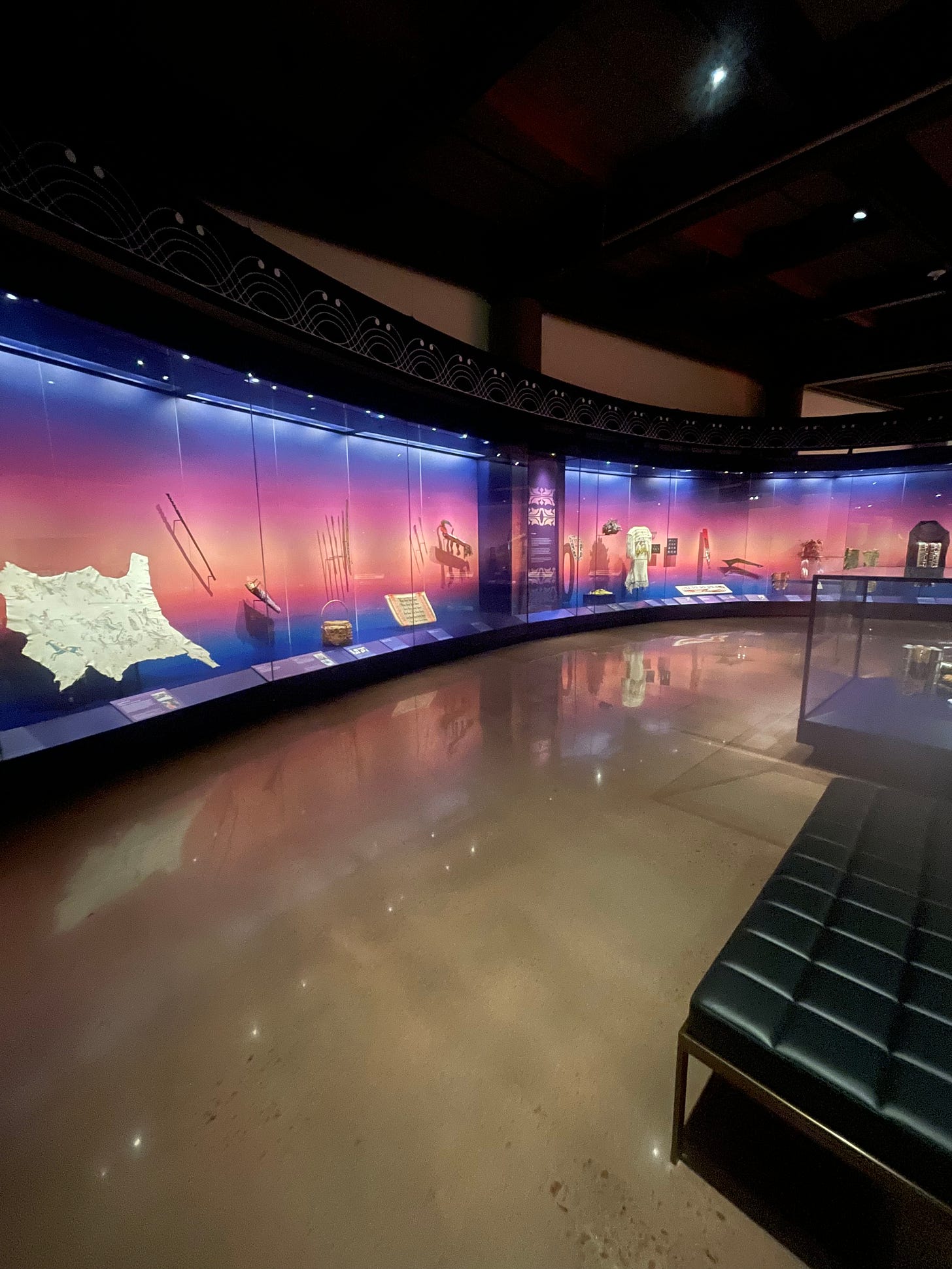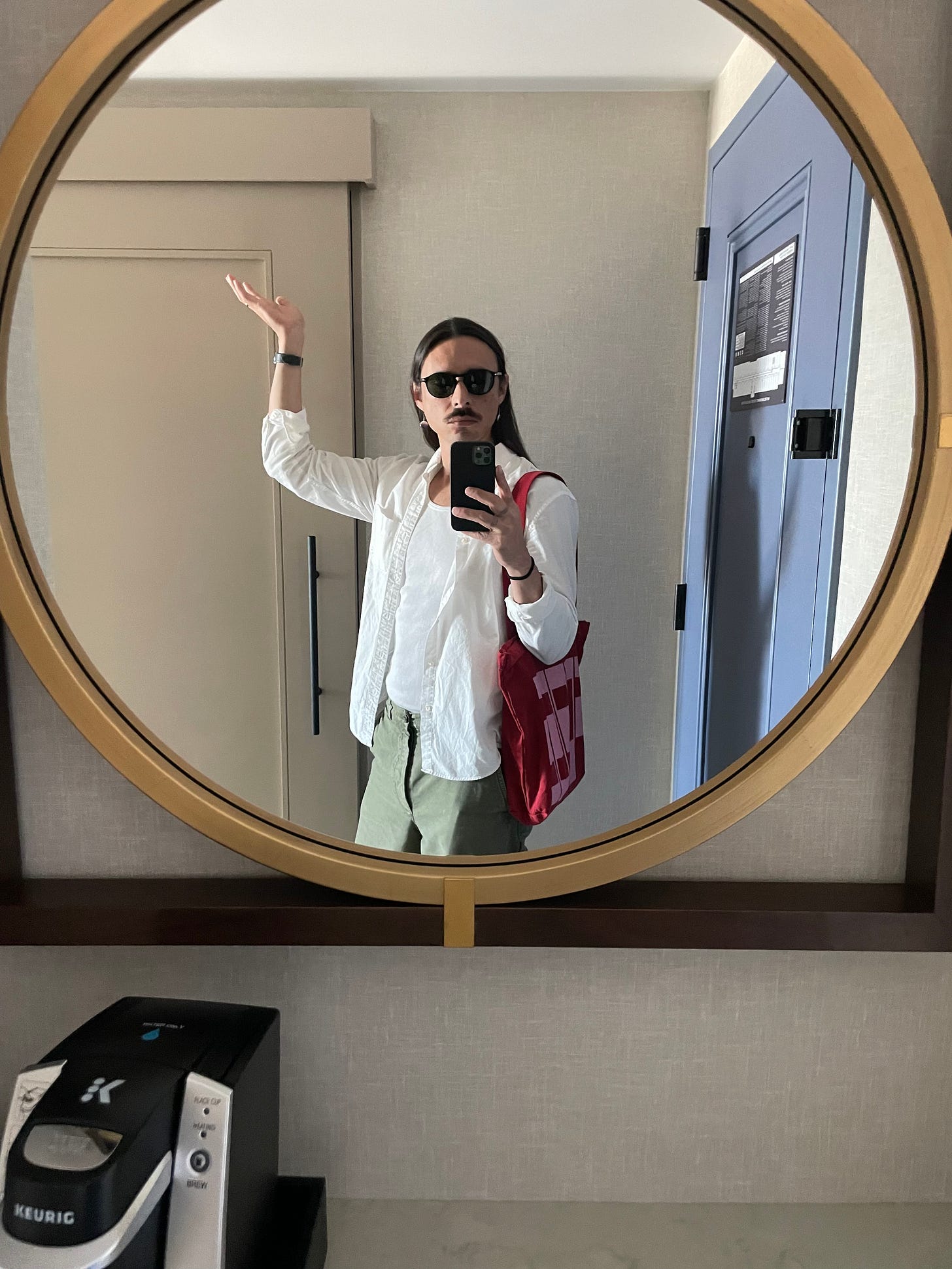I was down in Oklahoma City recently for the Native American and Indigenous Studies Association conference. What a brief moment of joy. To see the NDN bling, the laughs, the commiseration, the support. To see young people shining. To see old friends, older and older we get, sometimes wiser, or is it wearier?
I arrived a couple days before the main event for a pre-conference on Five Tribes scholarship, led by Megan Baker (Choctaw Nation) and Shannon Speed (Chickasaw Nation). It was held in a church away from the conference hotel, which was good—except, or especially because—the OKC basketball team had won the NBA championship, and their parade was that day, and the parade route concluded directly in front of the hotel. It was pandemonium.
(This is the view from my hotel window at about 10am, when the parade was just starting…so you can imagine how full it was by the end).
The Five Tribes gathering was really sweet. The pastor welcomed us, and a group of matriarchs cooked us all the classic southeastern things: wild onions and eggs, grape dumplings, corn, fried pork, potatoes. It was a room full of steam and smiling scholars, on a sweltering Oklahoma day.
We talked about what it would look like to think or rethink what “Five Tribes” (the term was coined by historians and anthropologists as the “Five Civilized Tribes”) scholarship could be. My own opinion: I think it works if we work it. Of course the term is an imposition. One that does not reflect our own diplomacies or histories. But it could be useful if we are the ones doing the reimagining. Commonalities of origin in the Southeast (minding the migration stories), language (minding the Cherokee difference there), and political and social organization, could allow us to think regionally, rather than along the lines of individual settler nation states, or even Indigenous nations. But I think the trend in Native studies is one of more nation-specific study, rather than one of region or hemisphere, though I know I personally have also advocated for a hemispheric approach. I guess it’s a question of scale. How do we describe Indigenous knowledge in context, while also paying attention to our shared ideas and practices, our shared histories, our shared struggles? I think some version of “Five Tribes” could do that, but I’m still not totally convinced.
I also went to the First Americans Museum before the conference. WHAT A BEAUTIFUL PLACE. Curator heather ahtone welcomed me and walked me through some of the galleries, which are painted in bright red, sunrise, sunset, deep purple streaks touching orange bands. I won’t detail the whole museum, but I was struck by how interactive the galleries are: an opening theater room to listen to creation stories, a wall with diverse historical markers and tribally specific information, nooks with staged fireplaces where you can listen to more stories, an interactive virtual game area, wall text in language, pictures of families being reunited with objects that had been removed from their communities centuries before. It was really a moving experience for me.
This is a photograph of part of WINIKO: Life of an Object, which includes a beautiful catalog detailing the process the FAM crew went through with communities to reunite them with these objects.
And here’s a picture of me in front of a mirror, with the standard hotel Keurig coffee maker in the foreground. UGHHHHH. Need better coffee, please.
Part II will describe my presentation, which, if I do say so myself, went very well, and scandalized or perhaps provoked quite a few members of the audience. I ended up being “the guy who gave the porn presentation,” and I’m fine with that.
Stay tuned.





LOVE the mirror photo! Can't wait for you presentation